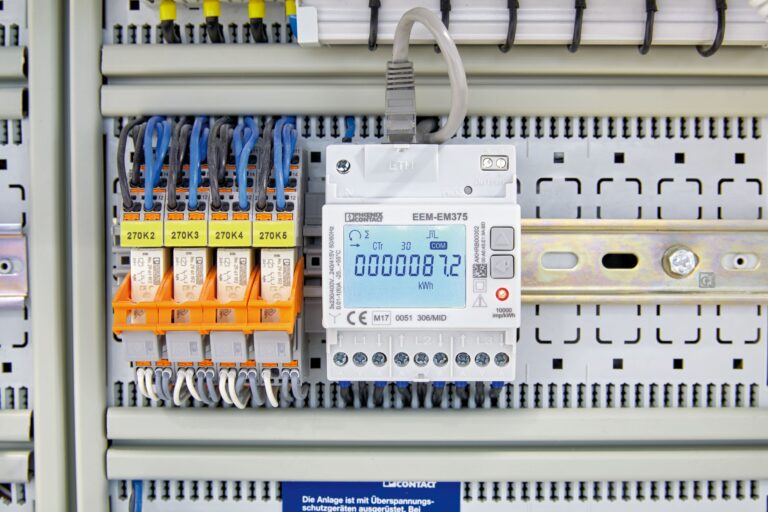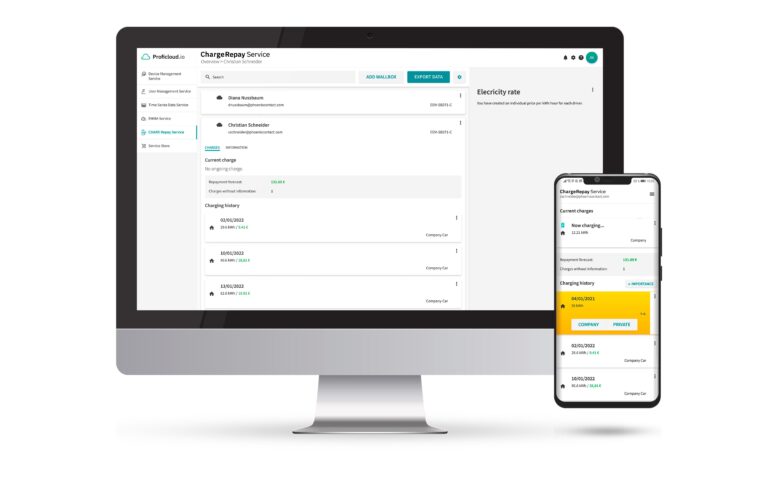- Julia Krüger
- Published on:
- Category: Electric vehicles
- 5 min.
Charge electric company cars at home and bill in compliance with calibration law with the Charge Repay Service
Will your next company car also be electric? Are you also wondering how you can settle your home charging costs with your employer? The Charge Repay Service from Phoenix Contact could be the simple answer to this question. Our product expert Anton Schönenberg explains the advantages of the Charge Repay Service in an interview.

Julia Krüger: Company cars are widespread in Europe and account for around 60 percent of all new car sales. More and more companies are electrifying their fleets and offering their employees electric company cars. In the case of classic combustion engines, employers often also cover the entire fuel costs. Billing is simple by using a fuel card or by submitting receipts to the employer. The charging costs for electric vehicles, on the other hand, are somewhat more complicated, as you can not only charge publicly, but also at your private home charging station. So what does the company car driver need in order to be able to settle the bill with the employer correctly? Mr. Schönenberg, can you answer this question for our readers?
Anton Schönenberg: Of course. Company car drivers basically have various options for settling the costs of charging their vehicle. In the case of public charging or charging at the employer’s premises, the costs are usually borne directly by the employer, either through charging cards or through the charging infrastructure at the workplace.
With home charging, on the other hand, the driver initially bears the costs as part of their electricity costs and must then be reimbursed by the company through a process. There are various reimbursement options: a flat-rate reimbursement or consumption-based reimbursement, which can be carried out either manually by the HR department or automatically by an external provider. A basic requirement for consumption-based reimbursement in Germany is compliance with calibration law in accordance with the German Measurement and Calibration Act.

Julia Krüger: It definitely sounds like it would either involve a lot of effort or, in the case of a flat rate, could result in preferential treatment or disadvantages. But not only for the person driving the vehicle on business trips, but also for companies, right?
Anton Schönenberg: Yes, that’s right. Companies are also facing several challenges. On the one hand, this includes expanding the charging infrastructure at the company location and removing the barriers to e-mobility for company car drivers. The solutions must be simple and convenient.
On the other hand, another problem has already been mentioned: managing the costs of electric company cars. In contrast to combustion engines, where there was only one fuel card, there are three scenarios for electric company cars: public charging, charging at work and charging at home. Charging at home poses a particular challenge, as compliance with calibration law must be guaranteed here. Many employees already have a simple home charging station at home, which they have purchased through subsidy programs. However, this is often not usable for the company car and needs to be replaced. In addition, the charging solutions must be integrated into existing HR and billing systems.
Julia Krüger: Can it still be an advantage for companies if their employees charge their electric company cars at home?
Anton Schönenberg: Definitely. Charging at home can significantly reduce operating costs, as cheaper electricity tariffs can be used in the private sphere. Compared to public charging, up to 50% of the costs can be saved. Charging at home also increases satisfaction for employees, as it increases their personal flexibility and they are not dependent on public charging facilities.

Julia Krüger: But you mentioned at the beginning that existing home charging stations are often not allowed to be used because they do not comply with German calibration law. How does a wallbox that complies with calibration law actually differ from a normal wallbox?
Anton Schönenberg: Home charging stations that comply with calibration law record electricity consumption precisely and tamper-proof for subsequent billing. They are more expensive to purchase, but enable legally compliant billing and have integrated metering and communication modules.
Julia Krüger: So does that mean that if I don’t have a home charging station that complies with calibration law, I have to dismantle the one I already have installed and replace it with a new one?
Anton Schönenberg: No, because fortunately it is possible to retrofit components that enable charging and billing in the home in compliance with calibration law.
Julia Krüger: That sounds sensible and certainly offers some advantages.
Anton Schönenberg: Exactly! Retrofitting a home charging station is much cheaper than replacing the entire wallbox. It is also much more sustainable, as the existing wallbox can continue to be used. And for you privately, there is a big plus point, because possible integrations of the home charging station into home energy systems or the connection to a PV panel remain completely unaffected by the retrofit.
Julia Krüger: Wonderful. And what is the solution for retrofitting my home charging station in compliance with calibration law?
Anton Schönenberg: At Phoenix Contact, we have developed the Charge Repay Service. As we also encountered the challenges described above, we wanted to develop a solution that complies with calibration law but is still inclusive. With the Charge Repay Service, we can now enable all wallboxes in the home charging station sector to comply with calibration law, meaning that no wallbox needs to be replaced or scrapped. We first tested our solution extensively at Phoenix Contact and then launched the service on the market. Our product is always met with great enthusiasm in discussions with customers and interested parties. In addition, our solution is patented and in this way unique on the market.

Julia Krüger: Mr. Schönenberg, please explain to our readers how exactly the Charge Repay Service works and what hardware needs to be installed for home charging stations that do not comply with calibration law.
Anton Schönenberg: The Charge Repay Service offers all the functions of a conventional backend service for home billing. Home charging stations that comply with calibration law can be connected via the Internet using the OCPP 1.6J connection protocol. All home charging stations that do not comply with calibration law are upgraded with our hardware retrofit and thus integrated into the service. An intermediate meter is installed in the supply line of the home charging station and connected to a Charge Repay Gateway. This in turn connects to the Charge Repay Service at and takes over the data transmission. Thanks to our patented solution, we can use this system to recognize charging processes and differentiate between private and business charging. For the fleet manager, the data is displayed in a fleet management portal regardless of the type of connection. In addition to the simple invitation of company car drivers, fleet management only has to perform monitoring tasks. Companies have the option of using the optional Reimbursement module. With this module, reimbursements are paid directly to company car drivers by a payment service provider. The company only receives one total monthly invoice.

Julia Krüger: In summary, what are the benefits of the Charge Repay Service for company car drivers and companies?
Anton Schönenberg: For company car drivers, the Charge Repay service offers simple and transparent billing, flexibility in the choice of home charging station and the option of classifying charging processes as business or private via a web app.
For companies, the service offers billing that complies with metering and calibration law, great flexibility in the integration of home charging stations, reduced administrative effort, cost efficiency, integration into existing systems and a transparent overview of charging information.
Julia Krüger: Mr. Schönenberg, thank you very much for the informative interview and for introducing the Charge Repay Service from Phoenix Contact.
You might also be interested in

- ·
- Electric vehicles
The path to an emission-free construction site Electrical construction machines require robust charging interfaces. The construction sites that we know[...]

- ·
- Electric vehicles
